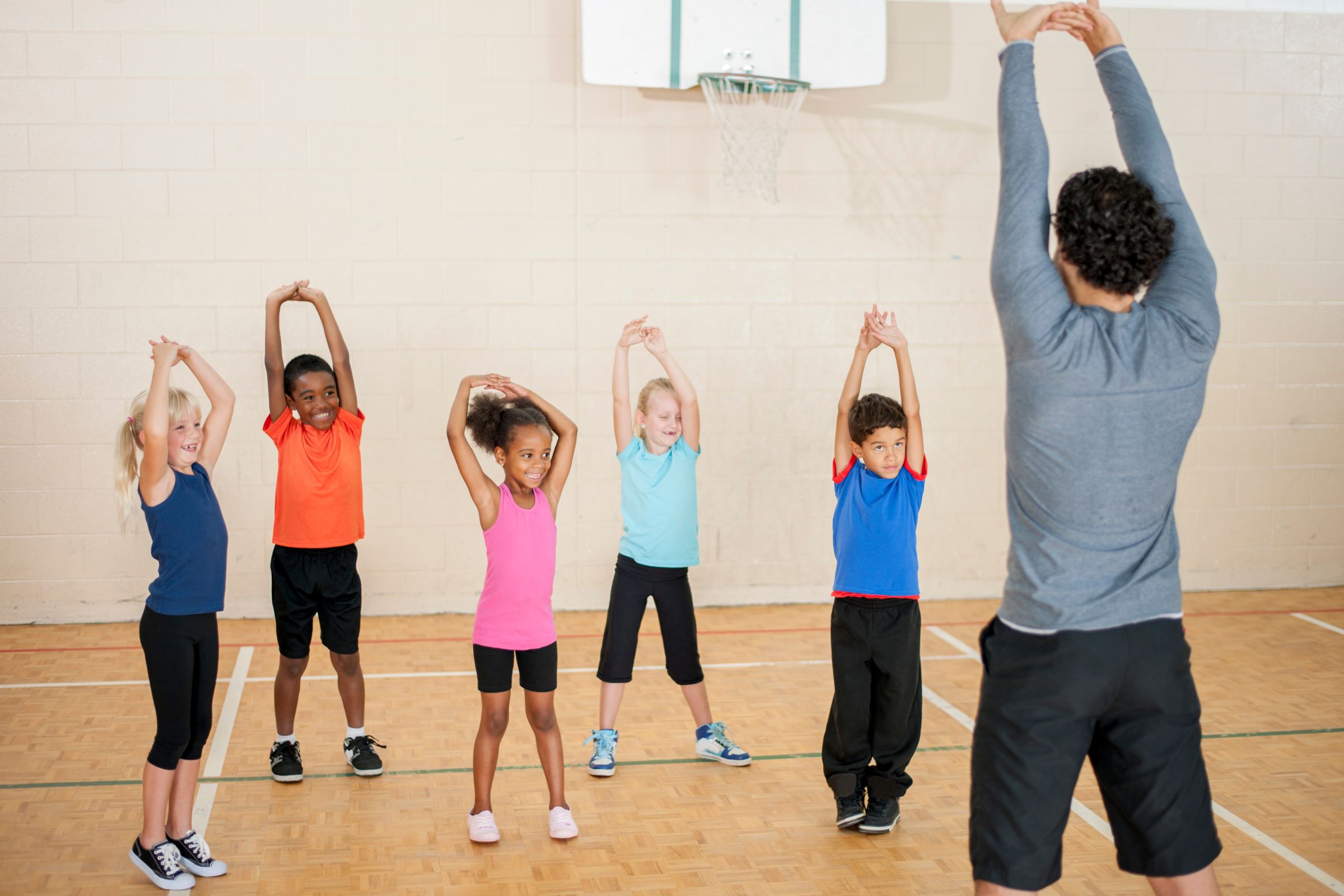Table of Contents
Related Articles
Athletic Facility Staff Safety: Comprehensive Injury Prevention Strategies For Educational Institutions

Understanding Unique Risks In Educational Athletic Facilities
Athletic facilities at independent schools and cultural institutions present distinctive safety challenges for maintenance and operations staff. From gymnasium setup and maintenance to pool chemical management and field upkeep, these specialized environments require targeted safety protocols to prevent injuries and reduce workers’ compensation claims. This guide examines the unique hazards faced by athletic facility workers and provides practical prevention strategies tailored for ISCC member institutions.
Gymnasium Safety: Beyond The Playing Surface
Equipment Setup & Storage Hazards
Gymnasium staff face significant ergonomic risks when handling heavy or awkward equipment. Basketball hoops, volleyball standards, gymnastics apparatus, and bleachers all present potential injury scenarios without proper protocols.
Key equipment handling safety strategies include:
- Implementing mandatory team lifting requirements for items over a specified weight
- Providing mechanical assistance devices such as dollies, carts, and hydraulic lifts
- Establishing clear equipment transportation pathways free of obstacles
- Training staff on proper lifting techniques specific to athletic equipment
Organized storage areas with clearly labeled equipment locations help reduce unnecessary handling and potential injuries from improperly secured items.
Floor Maintenance Safety Protocols
Gym floor maintenance involves unique chemical and physical hazards. Staff working with floor finishes, cleaning solutions, and buffing equipment need comprehensive training on chemical handling, ventilation procedures, and equipment operation safety.
Floor maintenance safety measures should address:
- Chemical handling procedures including proper dilution, application, and disposal
- Ventilation requirements for different floor finishing products
- Scheduling maintenance during low-occupancy periods
- Required personal protective equipment for specific maintenance tasks
Implementing these protocols reduces slip and fall incidents while ensuring adequate drying time before activity resumes, protecting both maintenance staff and facility users.
Pool Facility Safety Management
Chemical Handling Risk Mitigation
Pool maintenance staff work with potentially dangerous chemicals like chlorine, muriatic acid, and sodium bicarbonate. Proper chemical storage, clear handling procedures, and comprehensive emergency response training are essential components of an effective safety program.
Essential pool chemical safety protocols include:
- Designated chemical storage areas with proper separation of incompatible substances
- Required personal protective equipment including eye protection and chemical-resistant gloves
- Emergency response procedures for chemical spills or exposure
- Regular training on chemical safety data sheets and handling protocols
These measures should be consistently used during chemical transfers and water treatment procedures to protect staff from potentially harmful exposures.
Environmental Hazards In Aquatic Facilities
The humid, wet environment of indoor pools creates additional safety concerns including slippery surfaces, poor air quality, and potential electrical hazards.
Key environmental hazard prevention strategies include:
- Regular inspection of walking surfaces for deterioration or excessive moisture
- Visible warning signage in areas prone to wetness
- Regular maintenance of air handling systems to prevent chloramine buildup
- Inspection schedules for electrical systems in high-humidity environments
These measures can prevent slip-and-fall accidents and respiratory issues from chloramine exposure, particularly for staff spending extended periods in the pool environment.
Athletic Field Maintenance Safety
Equipment Operation Safety Procedures
Groundskeeping for athletic fields involves potentially dangerous equipment including mowers, trimmers, aerators, and utility vehicles. Comprehensive training and clear safety protocols significantly reduce accident risk.
Essential field maintenance equipment safety includes:
- Comprehensive initial training for all equipment operators
- Implementation of pre-operation equipment inspection checklists
- Required personal protective equipment specific to each piece of machinery
- Clearly defined work zones during equipment operation
- Regular equipment maintenance schedules with documentation
Implementing these protocols keeps both staff and facility users safe during maintenance activities and prevents potentially serious equipment-related injuries.
Weather-Related Safety Considerations
Outdoor facility staff face unique weather-related hazards including heat stress, lightning exposure, and cold-weather injuries. Developing clear protocols for extreme weather conditions protects workers from environment-related health emergencies.
Weather safety protocols should include:
- Clear guidelines for work restrictions during extreme temperature conditions
- Lightning detection and shelter procedures for outdoor workers
- Hydration stations and mandatory break schedules during high-temperature days
- Training on recognition of weather-related illness symptoms
These protocols help prevent heat exhaustion, hypothermia, lightning strikes, and other weather-related injuries common to outdoor athletic facility maintenance.
Ergonomic Injury Prevention Strategies
Manual Materials Handling Techniques
Athletic facility maintenance involves frequent lifting, carrying, and moving of equipment and supplies. Implementing proper body mechanics training reduces the risk of musculoskeletal injuries during routine operations.
Effective ergonomic strategies include:
- Body mechanics training focused on athletic equipment handling
- Provision of lifting aids including dollies, carts, and mechanical lifts
- Establishment of weight limits for individual lifting tasks
- Storage area design that minimizes reaching and bending
These approaches address the physical demands of athletic facility maintenance and help prevent both acute and cumulative ergonomic injuries.
Repetitive Motion Injury Prevention
Staff performing repeated maintenance tasks face increased risk of repetitive strain injuries. Implementing varied work patterns can significantly reduce this risk.
Key repetitive motion prevention strategies include:
- Job rotation to distribute physical demands across different muscle groups
- Provision of ergonomically designed tools and equipment
- Incorporation of micro-breaks during repetitive tasks
- Training on early symptom recognition and reporting
Regular evaluation of common tasks for ergonomic improvement opportunities should be part of ongoing safety programming to prevent these cumulative trauma disorders.
Developing a Comprehensive Athletic Facility Safety Program
Staff Training & Certification Requirements
Effective safety programs include comprehensive staff training tailored to specific job functions. Athletic facility safety should include specialized training in chemical handling, equipment operation, ergonomic techniques, and emergency response procedures.
A complete training program should address:
- Initial comprehensive safety orientation for new employees
- Job-specific training on equipment operation and maintenance
- Chemical handling certification for pool maintenance staff
- Emergency response procedures for facility-specific scenarios
- Documentation of completed training with competency verification
Maintaining records of completed training ensures continued competency in critical safety skills and demonstrates institutional commitment to worker protection.
Regular Safety Audits and Hazard Identification
Proactive safety management requires regular facility audits to identify and address potential hazards before injuries occur. Implementing scheduled inspections creates accountability and demonstrates commitment to worker safety.
Effective safety audit processes include:
- Scheduled facility-wide inspections with documentation
- Equipment-specific safety checks on a regular rotation
- Process for employees to report potential hazards
- Documentation of identified issues with correction timelines
- Data tracking to identify recurring safety concerns
Documentation of identified hazards and tracking of correction measures provides valuable data for ongoing program improvement and helps identify training needs.
The Value Of Preventative Safety Management
For ISCC member institutions, implementing comprehensive athletic facility safety protocols represents both an ethical commitment to staff wellbeing and a fiscally responsible approach to risk management. By addressing the unique hazards present in gymnasium, pool, and field maintenance operations, educational institutions can reduce injury incidents, minimize workers’ compensation claims, and create a safer workplace environment.
To learn more about how ISCC can support your institution’s safety initiatives through training resources, safety grants, and specialized consultation, contact our risk management team today.




